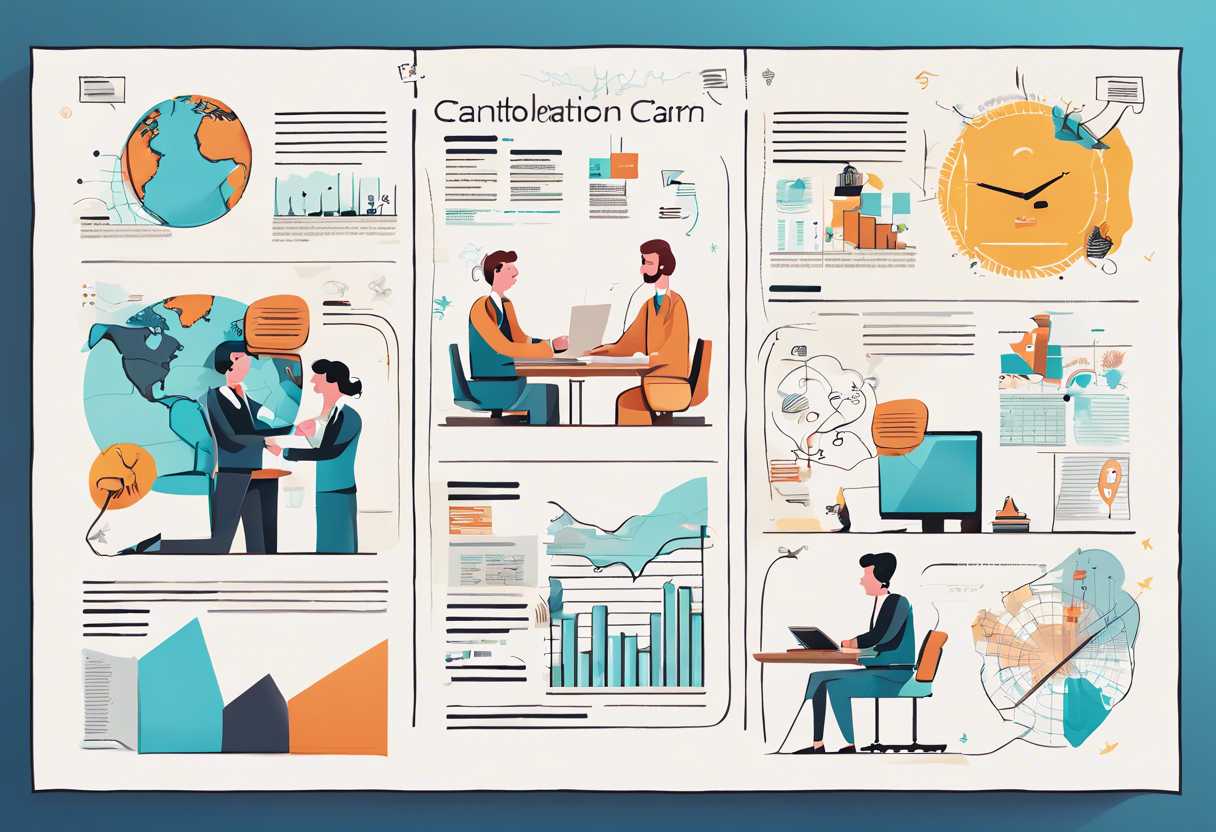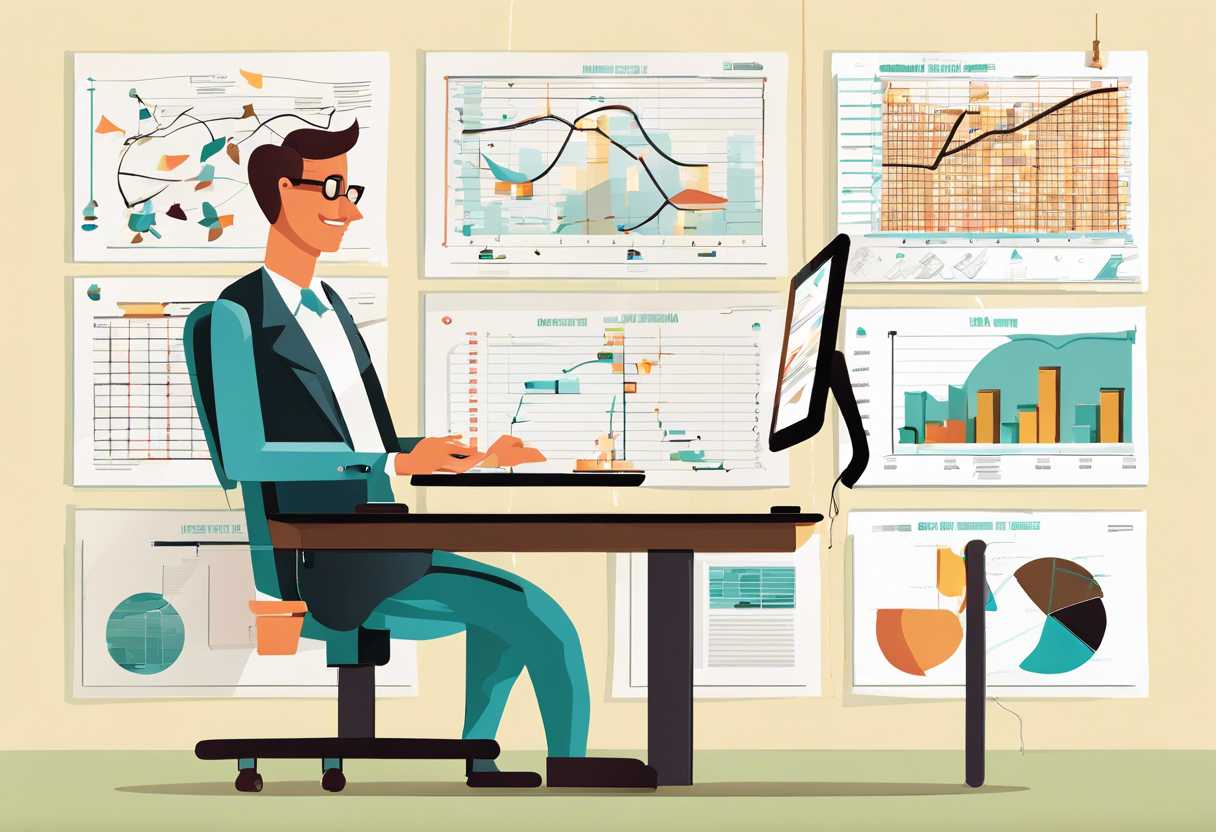Are you looking for a way to streamline your project management process and improve overall efficiency? Look no further than Gantt charts. These powerful tools offer a wide range of benefits for project managers, from enhancing team collaboration to overcoming common obstacles. In this blog post, we will explore the various ways in which Gantt charts can revolutionize your project management approach. From improving project planning and scheduling to maximizing productivity, implementing Gantt charts can make a significant impact on your project’s success. Let’s dive into the benefits of using Gantt charts for project management and discover how they can transform the way you work.
The Benefits of Using Gantt Charts for Project Management
Improved Planning and Scheduling
Gantt charts provide a visual representation of a project’s timeline, allowing project managers to easily see the sequence of tasks and their dependencies. This helps in creating a more realistic and achievable project schedule, as well as identifying potential bottlenecks and resource constraints. *By breaking down the project into smaller, manageable tasks, Gantt charts enable better planning and scheduling, leading to improved project efficiency and on-time delivery.*
Enhanced Communication and Collaboration
One of the key benefits of using Gantt charts is the improved communication and collaboration among team members. *By clearly outlining the tasks, deadlines, and responsibilities, Gantt charts help in aligning the team’s efforts towards a common goal.* Additionally, Gantt charts can be easily shared with stakeholders, providing transparency and visibility into the project’s progress and status.
Effective Resource Management
Gantt charts allow project managers to allocate resources more effectively by visualizing the workload and availability of team members. *By identifying resource conflicts and overallocations, project managers can make informed decisions to optimize resource utilization and prevent burnout.* This leads to better resource management and ultimately, improved project outcomes.

Implementing Gantt Charts to Improve Project Planning and Scheduling
The Benefits of Using Gantt Charts
One of the main benefits of using Gantt charts in project planning and scheduling is the visual representation of tasks and their timelines. This allows for easy identification of task dependencies, milestones, and potential bottlenecks. Additionally, Gantt charts provide a clear overview of the project’s progress, making it easier to track and manage deadlines.
Another advantage of Gantt charts is their ability to facilitate communication and collaboration among team members. By clearly outlining the sequence of tasks and their respective deadlines, Gantt charts help team members understand their roles and responsibilities, leading to improved coordination and efficiency.
Best Practices for Implementing Gantt Charts
When implementing Gantt charts, it’s important to ensure that the chart is updated regularly to reflect any changes in the project timeline or task dependencies. This will help in maintaining the accuracy and relevance of the chart throughout the project’s lifecycle.
Furthermore, it’s essential to involve all relevant stakeholders in the creation and maintenance of the Gantt chart. This ensures that everyone is aligned on the project timeline and can provide input on potential adjustments or optimizations.
Key Features of Gantt Chart Software
- Task dependencies and relationships
- Resource allocation and management
- Customizable timelines and milestones
- Collaboration and communication tools
- Integration with other project management tools
| Task | Start Date | End Date |
| Task 1 | 01/01/2023 | 01/15/2023 |
| Task 2 | 01/16/2023 | 02/10/2023 |
| Task 3 | 02/11/2023 | 02/28/2023 |

How Gantt Charts Enhance Team Collaboration and Communication
Improved Task Management
Gantt charts provide a visual representation of project timelines, allowing team members to see the sequence of tasks and their deadlines at a glance. This helps in better task management as it enables team members to prioritize their work and allocate resources effectively. With a clear overview of the project schedule, team members can coordinate their efforts and ensure that tasks are completed on time.
Enhanced Communication
By using Gantt charts, team members can easily communicate and collaborate on project timelines and dependencies. This visual tool helps in identifying potential bottlenecks and overlapping tasks, allowing for better coordination and communication among team members. Additionally, Gantt charts can be shared with stakeholders to keep them informed about project progress and timelines, fostering transparency and accountability within the team.
Streamlined Decision-Making
With the ability to visualize project timelines and dependencies, Gantt charts facilitate informed decision-making. Team members can quickly assess the impact of changes or delays on the overall project schedule, enabling them to make timely adjustments and mitigate risks. This streamlined decision-making process helps in keeping the project on track and ensures that all team members are aligned with the project goals and timelines.
Maximizing Efficiency and Productivity with Gantt Charts in Project Management
The Power of Gantt Charts
Gantt charts are a powerful tool in project management, providing a visual representation of a project’s timeline, tasks, and dependencies. By using Gantt charts, project managers can easily track progress, identify bottlenecks, and allocate resources effectively. This visual representation helps teams stay on track and meet deadlines, ultimately maximizing efficiency and productivity.
Benefits of Using Gantt Charts
One of the key benefits of using Gantt charts is the ability to clearly see the sequence of tasks and their deadlines. This helps in prioritizing tasks and allocating resources efficiently. Additionally, Gantt charts allow for easy identification of critical path tasks, which are essential for meeting project deadlines. By using Gantt charts, project managers can also communicate project timelines and progress effectively to stakeholders, ensuring everyone is on the same page.
Implementing Gantt Charts in Project Management
When implementing Gantt charts in project management, it’s important to choose the right software that offers the necessary features and flexibility. Look for software that allows for easy task scheduling, dependency management, and resource allocation. Additionally, consider the ability to customize the chart to fit the specific needs of your project. Once the software is chosen, it’s important to train team members on how to use Gantt charts effectively, ensuring everyone is on board with this powerful project management tool.
Challenges and Obstacles in Project Management
Project management is a complex and challenging task that requires careful planning, coordination, and execution. One of the biggest obstacles that project managers face is the ability to effectively manage and track the progress of their projects. This is where Gantt charts come in as a valuable tool for overcoming these challenges.
Understanding the Benefits of Gantt Charts
Gantt charts provide project managers with a visual representation of the project timeline, tasks, and dependencies. This allows for better planning and scheduling, as well as the ability to identify potential bottlenecks and resource constraints. By using Gantt charts, project managers can effectively allocate resources, track progress, and make informed decisions to keep the project on track.
Overcoming Communication and Collaboration Challenges
One of the biggest challenges in project management is communication and collaboration among team members. Gantt charts provide a centralized platform for team members to access and update project tasks, deadlines, and dependencies. This helps to improve communication and collaboration, as well as ensure that everyone is on the same page regarding project progress and timelines.
Additionally, Gantt charts can be shared with stakeholders and clients to provide transparency and keep them informed about the project status. This helps to build trust and confidence in the project management process, as well as manage expectations and potential changes in project scope.
Conclusion
In conclusion, Gantt charts are an invaluable tool for streamlining project management. From improving project planning and scheduling to enhancing team collaboration and communication, Gantt charts offer a wide range of benefits that can significantly boost efficiency and productivity. By implementing Gantt charts, project managers can overcome challenges and obstacles, ultimately leading to successful project completion.
As you continue to explore the potential of Gantt charts in project management, remember to prioritize clear communication, effective planning, and efficient scheduling. By leveraging the power of Gantt charts, you can streamline your project management processes and achieve greater success in your endeavors.
Take the next step in optimizing your project management approach by incorporating Gantt charts into your workflow. Embrace the potential of this powerful tool and experience the transformative impact it can have on your projects.
Are you ready to streamline your project management with Gantt charts? Start implementing this valuable tool today and unlock the full potential of your projects.

